
How to Use GPS NEO-6M V2: Examples, Pinouts, and Specs
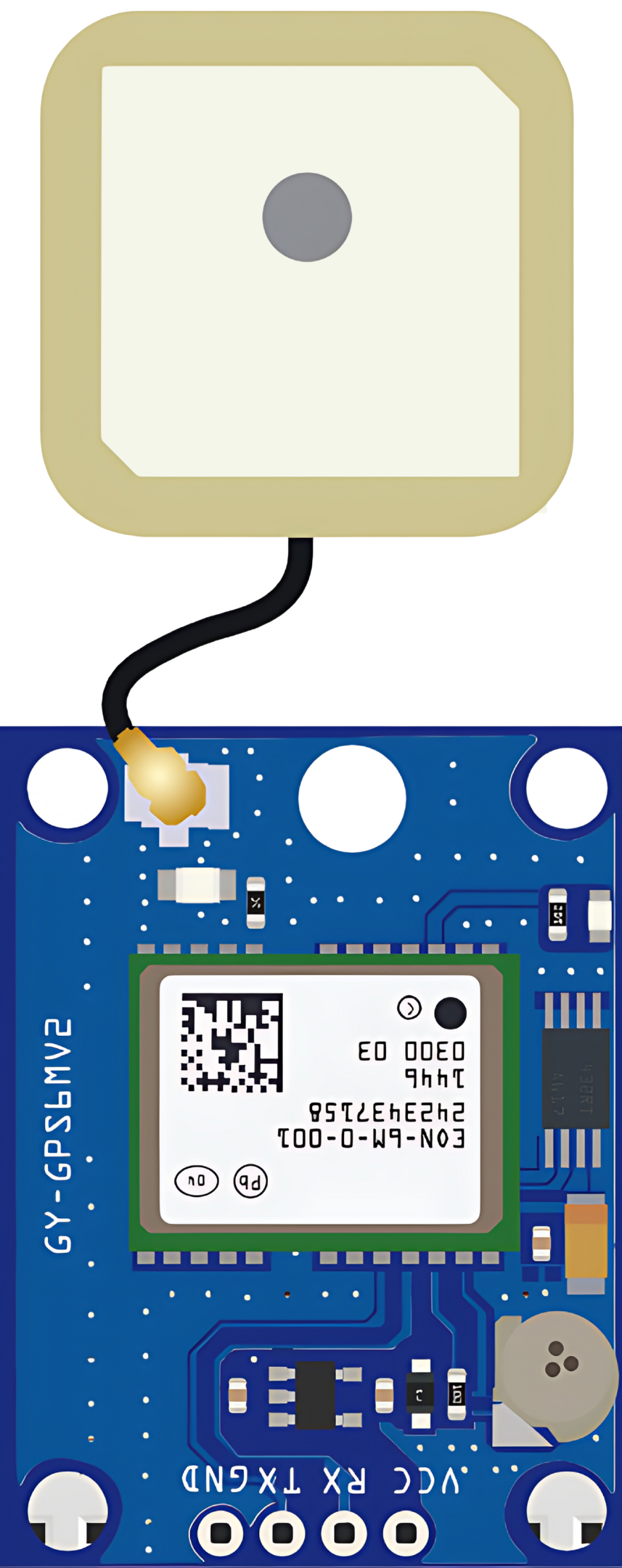
 Design with GPS NEO-6M V2 in Cirkit Designer
Design with GPS NEO-6M V2 in Cirkit DesignerIntroduction
The GPS NEO-6M V2 module is a versatile and compact GPS receiver that offers high-performance satellite navigation by leveraging signals from multiple satellite constellations. It is widely used in a range of applications, including personal navigation systems, asset tracking, drones, and Internet of Things (IoT) devices. The module's ability to provide accurate positioning and speed information makes it an essential component in modern electronics where location-based services are required.
Explore Projects Built with GPS NEO-6M V2
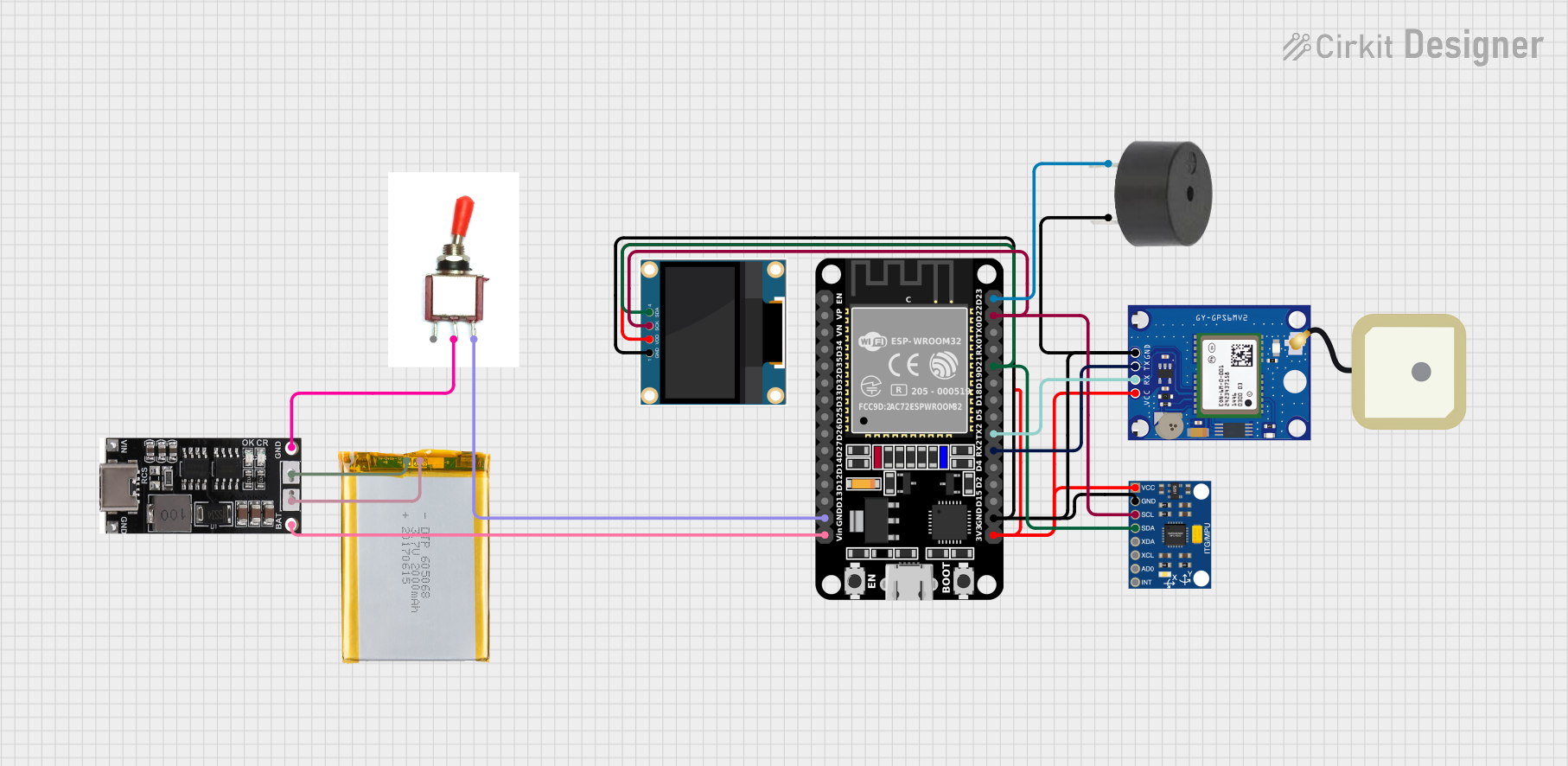
 Open Project in Cirkit Designer
Open Project in Cirkit Designer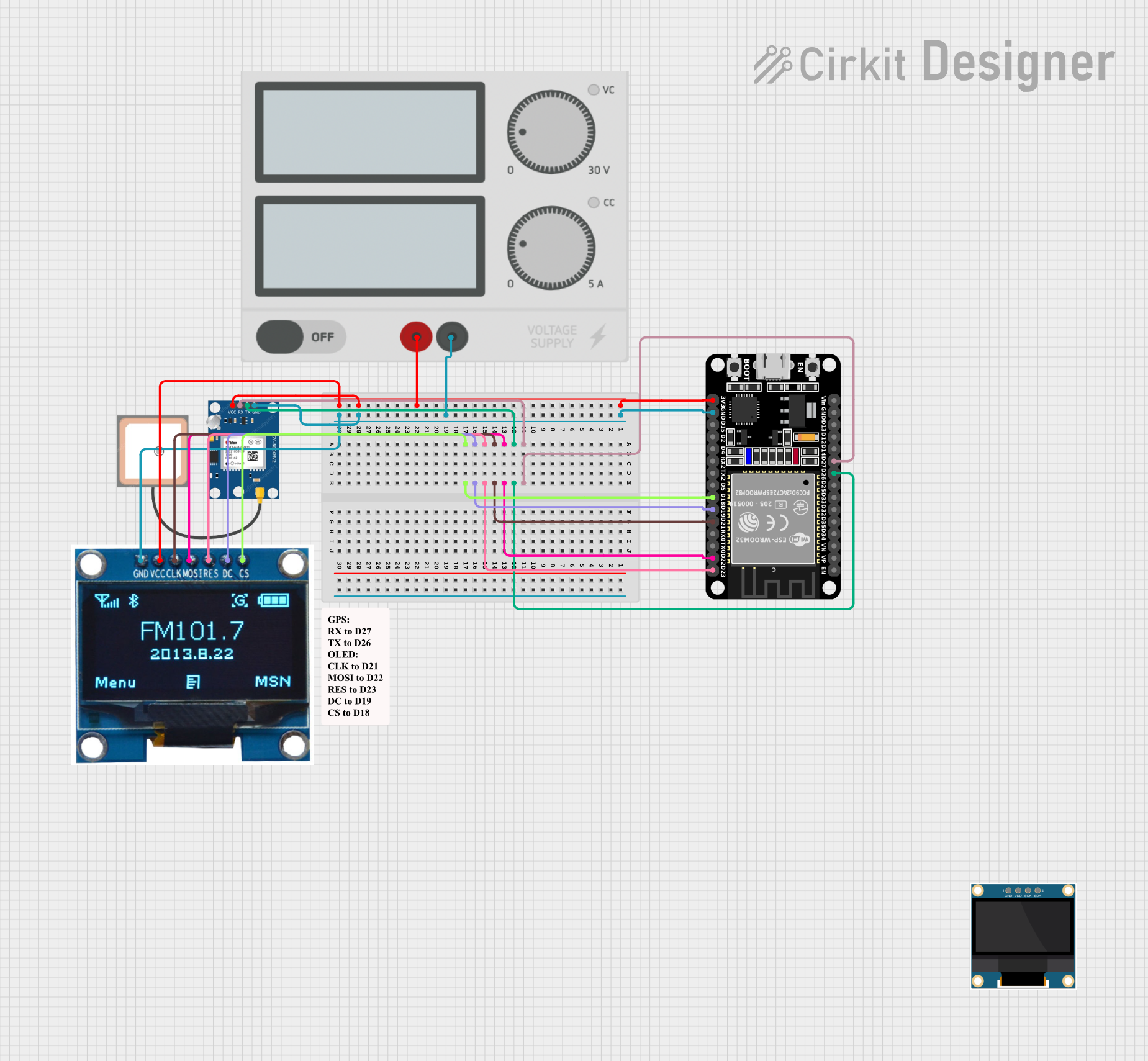
 Open Project in Cirkit Designer
Open Project in Cirkit Designer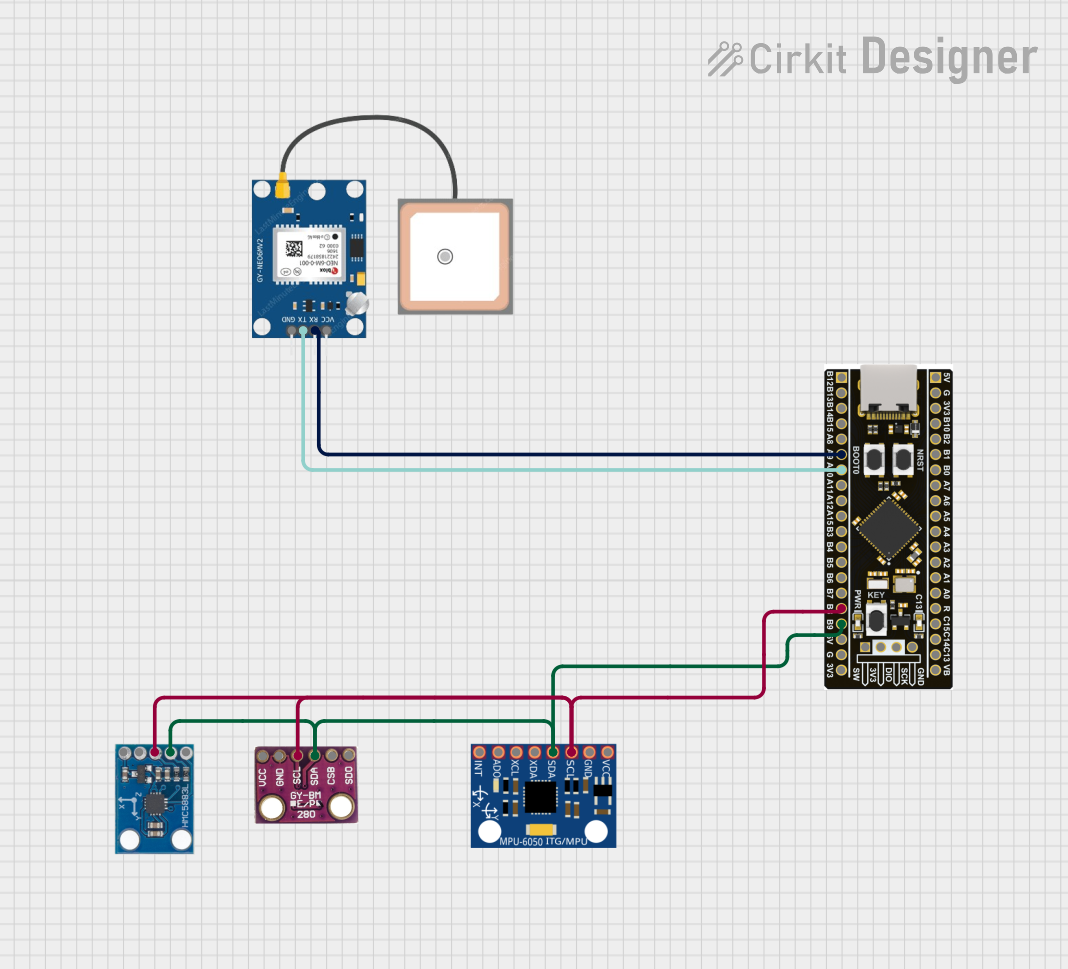
 Open Project in Cirkit Designer
Open Project in Cirkit Designer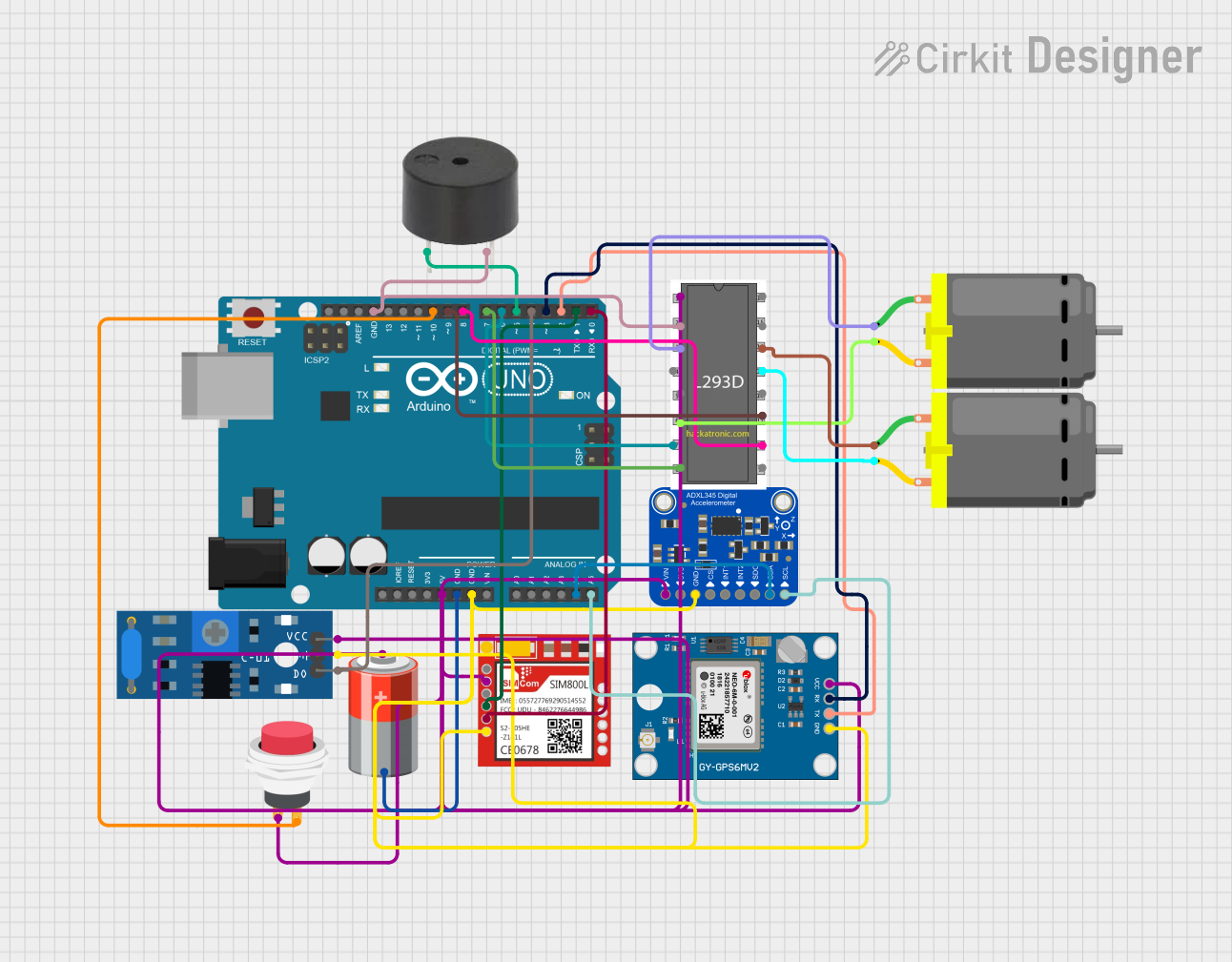
 Open Project in Cirkit Designer
Open Project in Cirkit DesignerExplore Projects Built with GPS NEO-6M V2

 Open Project in Cirkit Designer
Open Project in Cirkit Designer
 Open Project in Cirkit Designer
Open Project in Cirkit Designer
 Open Project in Cirkit Designer
Open Project in Cirkit Designer
 Open Project in Cirkit Designer
Open Project in Cirkit DesignerCommon Applications and Use Cases
- Personal and vehicle navigation systems
- Geocaching and outdoor sports
- Fleet management and asset tracking
- Time synchronization for networks
- Autonomous drones and robotics
- IoT devices with location-based services
Technical Specifications
Key Technical Details
- Receiver Type: 50 Channels, GPS L1 frequency, C/A Code
- Sensitivity: Tracking & Navigation: -161 dBm
- Time-To-First-Fix: Cold starts: 27s (typ.), Hot starts: 1s (typ.)
- Accuracy: Position 2.5m CEP
- Update Rate: Up to 5Hz
- Operating Voltage: 3.3V-5V
- Power Consumption: 50mA (typical)
Pin Configuration and Descriptions
| Pin Number | Name | Description |
|---|---|---|
| 1 | VCC | Power supply input (3.3V-5V) |
| 2 | GND | Ground connection |
| 3 | TX | Transmit data out (TTL level) |
| 4 | RX | Receive data in (TTL level) |
| 5 | PPS | Pulse per second output |
Usage Instructions
How to Use the Component in a Circuit
- Power Supply: Connect the VCC pin to a 3.3V-5V power source and the GND pin to the ground.
- Data Communication: Connect the TX pin of the GPS module to the RX pin of the microcontroller and the RX pin to the TX pin of the microcontroller.
- Antenna: Ensure the GPS module's antenna has a clear view of the sky for optimal performance.
- Serial Interface: Configure the microcontroller's serial interface to the same baud rate as the GPS module (usually 9600 bps).
Important Considerations and Best Practices
- Antenna Placement: The antenna should have a clear view of the sky. Avoid placing it next to large metal objects or under a roof.
- Power Supply: Ensure a stable power supply. Voltage fluctuations can cause the module to reset or malfunction.
- Serial Communication: Use a level shifter if the microcontroller operates at a different logic level than the GPS module.
- Warm-Up Time: Allow the module a few minutes to warm up and acquire satellite signals upon initial power-up.
Example Code for Arduino UNO
#include <SoftwareSerial.h>
// Create a software serial port called "gpsSerial" on pins 3 (RX) and 4 (TX)
SoftwareSerial gpsSerial(3, 4);
void setup() {
// Start the Arduino hardware serial port at 9600 baud
Serial.begin(9600);
// Start the software serial port at 9600 baud
gpsSerial.begin(9600);
}
void loop() {
// Check if data is available on the GPS serial port
if (gpsSerial.available()) {
// Forward any available GPS data to the hardware serial port
Serial.write(gpsSerial.read());
}
// Check if data is available on the hardware serial port
if (Serial.available()) {
// Forward any available data from the hardware serial port to the GPS
gpsSerial.write(Serial.read());
}
}
Troubleshooting and FAQs
Common Issues Users Might Face
- No Data Output: Ensure the antenna has a clear view of the sky and the module has had sufficient time to acquire satellites.
- Garbled Data: Check the baud rate settings on both the GPS module and the microcontroller. They must match.
- Inaccurate Position: Wait for the module to get a stable fix; moving the antenna to a location with a better view of the sky can help.
Solutions and Tips for Troubleshooting
- Power Cycle: If the module is unresponsive, try power cycling it by disconnecting and reconnecting the power.
- Check Connections: Verify all connections, especially the serial communication lines, for proper contact and orientation.
- External Antenna: If the signal is weak, consider using an external antenna with a clear view of the sky.
FAQs
Q: How long does it take for the GPS module to get a fix? A: It typically takes 27 seconds for a cold start and 1 second for a hot start, but this can vary based on environmental conditions.
Q: Can I use the GPS module indoors? A: GPS signals are weak indoors. It's recommended to use the module outdoors or near a window for better signal reception.
Q: What is the PPS pin for? A: The PPS (Pulse Per Second) pin outputs a pulse once per second, which can be used for precise timekeeping or to synchronize multiple GPS receivers.